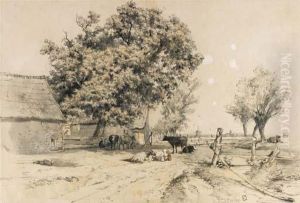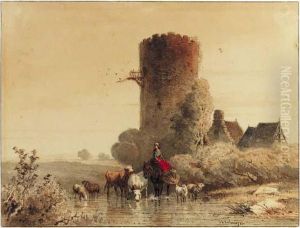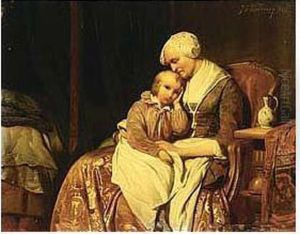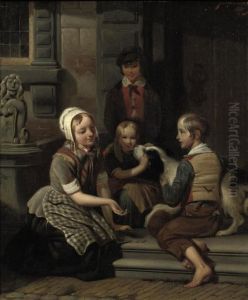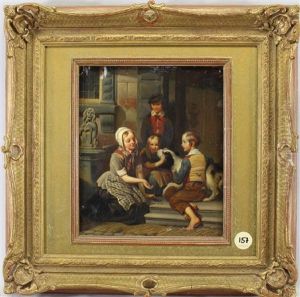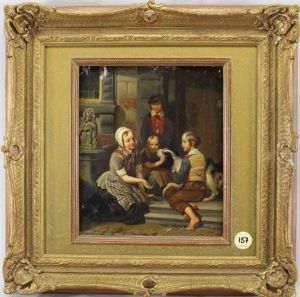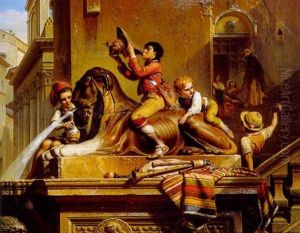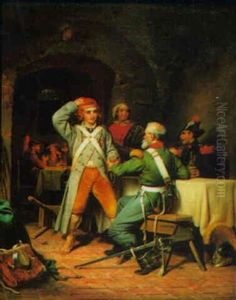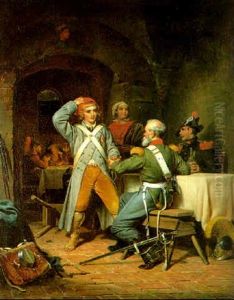Johan Philip Koelman Paintings
Johan Philip Koelman was a Dutch painter, sculptor, and educator born on September 20, 1818, in The Hague, Netherlands. He was known for his contributions to the Dutch art scene of the 19th century, particularly in the realm of sculpture. Koelman's artistic inclinations were evident from a young age, and he pursued his education in the arts with great dedication.
Koelman's early training took place at the Academy of Fine Arts in The Hague, where he honed his skills in drawing and painting. However, it was during his further studies in Italy that he developed a profound interest in sculpture. The Italian Renaissance, with its rich artistic heritage, greatly influenced Koelman's style and approach to art. He spent several years in Rome, which was a hub for artists seeking inspiration from the classical and Renaissance masters.
During his time in Italy, Koelman's work began to attract attention, and he received commissions from various patrons. His sculptures often reflected a classical sensibility, with a focus on harmonious proportions and a sense of ideal beauty. After his successful period in Italy, Koelman returned to the Netherlands, where he continued to work and contribute to the artistic life of his home country.
Back in The Hague, Koelman took on a significant role in art education. He was appointed as a professor at the Royal Academy of Art, where he influenced a generation of Dutch artists. His teachings were instrumental in shaping the Dutch approach to art education during his tenure. Koelman's legacy as an educator is perhaps equally as important as his contributions as an artist.
Throughout his career, Koelman received various honors and recognition for his work. He was a respected figure in the Dutch art world and participated in numerous exhibitions. Despite his success, Koelman never lost his passion for learning and exploring new artistic avenues.
Johan Philip Koelman passed away on October 11, 1893, in The Hague. His works continue to be appreciated for their craftsmanship and classical beauty, and his influence as an educator is still felt in the Dutch art community. Koelman's dedication to art and his commitment to fostering artistic talent have cemented his place in the history of Dutch art.
